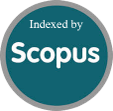Sustainable management of Dashino River basin, based on the implementation of a comprehensive management plan
DOI:
https://doi.org/10.51798/sijis.v3i2.311Keywords:
Dashino River Basin, Comprehensive Management Plan, Local Conservation PoliciesAbstract
The management of water resources is one of the priorities at the level of Ecuador, which must be permanently throughout the national territory, which is why it has established regulations for its conservation and use of ecosystem services in a sustainable manner, the present investigation Its purpose is to protect the environmental conditions of the Dashino River basin, to conserve and maintain all ecosystem services through the comprehensive management of preservation actions. The monitoring of the wild fauna allowed us to have a referential input that was taken as a starting point to create an area of free transit of species, connecting the Dashino river basin with the Cayambe Coca National Park and the Cofán Bermejo Ecological Reserve, giving the genetic conservation of species, implementing the different local regulatory instruments that allow us to interact with control entities to prevent illegal hunting and trafficking of species.
References
Arteta, Y et. al. (2015). La gestión ambiental de la cuenca del río Magdalena desde un enfoque socialmente responsable. Revista Amauta No. 26, 193 - 218.
Calles, J. et. al. (2012). Plan de Manejo Integral de la cuanca del río Dashino. Ecociencia.
Calles, J., & López, A. (2012). Guía para la implementación de corredor riparios en la cuenca del río Dashino. Ecociencia.
Cotler, H. (2010). Las cuancas hidrográficas de México. Diagnóstico y priorización. Instituto Nacional de Ecología - SEMARNAT - Fundación Gonzalo Ríos Arronte, 231.
Cruz, B. et. al. (2015). Análisis morfométrico de la cuanca hidrográfica del río Cule, Jalisco, Mexico. SEDICI Repositorios Institucional de la UNLP, 26 - 34.
Deón, J. (2015). Sierras chicas, conflictos por el agua y el uso de suelo. Realciones de poder en la gestión de cuancas. . Cardinalis Revista del Departamento de Geografía. FFyH – UNC, 162 - 189.
Flores, E. et. al. (2018). DIagnóstico de las áreas de importancia hídrica y caracterización de los sistemas de abastecimiento de agua potable para la ciudad de lumvaqui, cantón Gonzalo Pizarro, provincia de Susumbíos. Naturaleza y cultura.
Muñoz, E., & Torres, G. (2015). Potencial turístico de la microcuanca del río Chimborazo, cantón Riobamba, provincia de Chimborazo, Ecuador . European Scientific Journal August vol. 11 no. 23, 325 - 342.
Downloads
Published
How to Cite
Issue
Section
License
Copyright (c) 2022 Magda Cejas, Juan Pablo Morales Corozo

This work is licensed under a Creative Commons Attribution-NonCommercial-NoDerivatives 4.0 International License.




